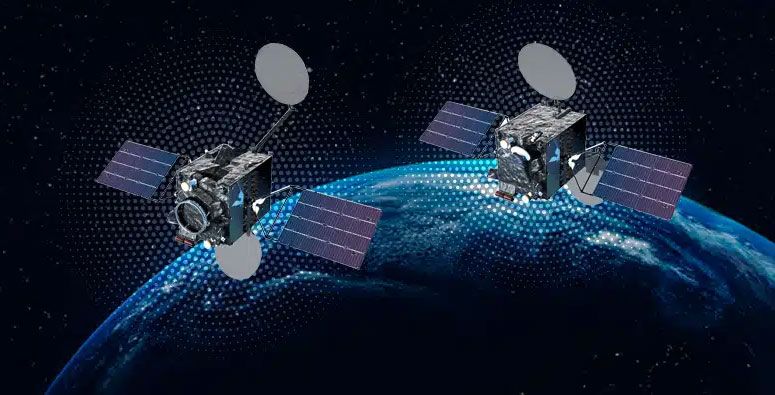
Expanding the use of geostationary FSS space stations with mobility


Hazem Moakkit, Vice President, Spectrum Strategy, Intelsat
In our increasingly connected world, the expectation of being “always on” is no longer bound by geography or location.
But while terrestrial mobile coverage continues expanding, there will always be situations and locations where satellite connectivity is the only solution to keep people and machines connected everywhere and on the go.
Terrestrial coverage may remain unavailable due to geographic or economic limitations, or it may be disrupted by temporary events or disasters. Satellites, geostationary and non‑geostationary, provide the crucial backstop in such situations.
Relying on satellite connectivity
Industries such as mining, construction, and agriculture require satellite services to keep their heavy equipment and crews connected in hard-to-reach locations. Vessels at sea, such as cruise ships, merchant ships, commercial fishing fleets and even offshore platforms, also rely on satellites to stay connected.
Whether on land, at sea or in the air, companies continue to rely on satellite connectivity services and solutions to keep their operations in motion, continuously connected everywhere. And when disaster strikes, emergency responders rely on satellite access for critical communications whenever and wherever cellular connectivity fails.
The need for cost-efficient, high-performing mobile earth stations
As the demand for mobile connectivity surges, so does the need for cost-efficient, high-performing mobile earth stations.
Historically, ground stations for two-way satellite communications were large and heavy. Even the relatively low-cost VSAT (very small aperture terminal) systems in use since the 1980s had to be operated by specialist technicians.
Today’s terminals, in contrast, meet the size and performance efficiencies for a host of mobile connectivity applications.*
Flat-panel antennas — with their simple design and make-before-break capability that enables them to link to satellites ahead — have proven ideal for land and air mobile use.
Electronically steered, phased-array antennas (ESAs) use multi-beam scanning to seamlessly track and switch between multi-orbit satellites. For operators, these auto-point antennas are simpler and easy to use.
Enhanced performance
New advances in satellite systems make mobility readily accessible and economical. Beamforming technology enables software-defined satellites — commonly called SDSs — to deliver satellite capacity precisely where and when needed.
Each SDS can form thousands of beams within its service area, only bound by the amount of spectrum available and the power of the spacecraft needed to launch these systems. This significantly changes the economics of satellite services.
The proliferation of non‑geostationary satellites in the last few years has also brought a new paradigm to satellite communications, driven by a big push from advances in technology and a significant pull from consumers with an insatiable appetite for connectivity.
Regulatory challenges
Providing mobility in the fixed-satellite service (FSS), however, presents new regulatory challenges. The “classic” definition of FSS implies that earth stations are fixed, not mobile.
Over the years, successive World Radiocommunication Conferences have explored technical and regulatory frameworks to allow more flexibility within FSS systems. The upcoming World Radiocommunication Conference, WRC‑23, is no different.
Agenda item 1.15 for the conference considers the possibility of providing aero and maritime flexibility within the planned FSS bands for geostationary satellites. Agenda item 1.16 focuses on earth stations in motion operating with non‑geostationary satellites in the Ka‑band.
The Radio Regulations — the international treaty governing the radio spectrum and geostationary and non‑geostationary satellite orbits — are constantly evolving to stay up to date with the needs of countries worldwide.
Converging spectrum allocations
Convergence is a recurring theme within the telecommunications industry at large. Video, voice and data have all converged under the Internet Protocol (IP) as a unifying platform to transport all data.
Similarly, the regulatory lines between the various satellite spectrum allocations are becoming blurry. A Ku‑band SDS, for instance, while fully respecting the Radio Regulations, may rely on unfettered access to large swaths of spectrum across the 10.7–12.75 gigahertz (GHz) frequency range.
Those frequencies also encompass multiple satellite spectrum allocations: FSS, Planned FSS, and broadcasting-satellite service (BSS). With proper coordination, such flexibility increases spectrum efficiency.
Keeping up with technology
The broader challenge that satellite operators and service providers all face is to keep up with the pace of technology, as well as rapidly evolving Radio Regulations. Unfortunately, decisions taken at World Radiocommunication Conferences every four years are often not quickly adopted in regulations at the national level.
The International Telecommunication Union (ITU) — the custodian of the Radio Regulations — holds workshops around the world to disseminate updates and explain the latest changes to governments, regulators and the industry. In the same vein, all ITU Member States are encouraged to integrate ITU decisions promptly into local regulations and make good use of the resulting flexibility.
*Satellite connectivity leaders KVH, Satcube, Starwin, and ST Engineering iDirect all provided information for this article on the latest advances in ground terminals.
Download your copy of the ITU News Magazine: Satellite connectivity.
Header image credit: Intelsat
